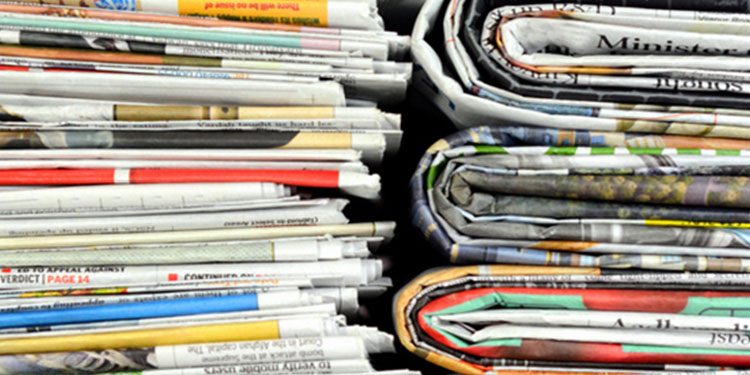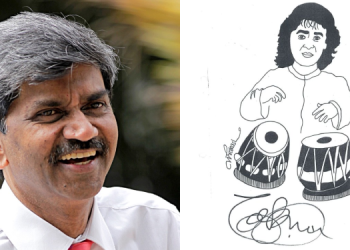Print publishers across the board agree that newsprint costs are going through the roof. Thankfully, publishers who use a mix of stock in hand and newly purchased newsprint can offset some of this surge. While newsprint takes up about half the cost of publishing, other costs have been going up too. The latest is the 6pc increase in GST rates on printing ink, which is a small factor yet one that adds to their challenges..

“The hike in GST rates on printing ink will have an impact on the print industry which has already been affected by the steep increase in the newsprint price. Newsprint price has gone up from USD 480 per tonne to 1100 per tonne, over the last one year, though a sharp increase is witnessed in the last six months,” notes Varghese Chandy, VP, Marketing & Advertising Sales, Malayala Manorama.

Ranjeet Kate, CEO, Vijay Karnataka and Bangalore Mirror avers that while broadly, printing ink is a smaller part of total variable cost, the GST hike would certainly increase the cost burden on newspapers.

Devika Shreyams Kumar, Vice President – Operations, Mathrubhumi Group, contends that the 6pc increase in the GST rates on printing ink to 18pc will have serious impact on the print media. She points out that since the newspaper industry is not allowed to take input tax credit fully, it is expected that the print industry will have to absorb upto 3pc increase in GST on printing inks. “This will result in increased cost of newspaper production and prejudicially affects the already ailing newspaper industry,” rues Kumar.
Covid-induced economic downturn and the ongoing Russia-Ukraine conflict are among the macro factors at work. With several newsprint factories closing operations, there is a global shortage of newsprint and prices have been spiralling for the last 18 months, she explains.
It doesn’t help that India is the largest importer of newsprint globally, with 45pc of all imports coming from Russia alone – which has stopped following international sanctions on the country.
“Due to all these factors, there has been an exponential increase in the newsprint price from from USD 450 per tonne to 1000 per tonne. Due to increased pressure on the logistics chain, the freight costs for ocean transportation have risen by 400pc. All these have resulted in newsprint supply chain disruptions. Newspaper businesses have become uneconomical,” explains Kumar.
Manorama’s Chandy adds, “Prices of consumables have also gone up; shipping costs, rupee depreciation etc also contributed to the escalation in costs.”
Another multi-language publisher says it would be safe to assume that there has been at least an over 60pc increase in cost of newsprint in FY 2023. On the increased cost of ink and plates, he says they form a small part of the input costs and hence the impact would be nominal. Yet they all add up and businesses will have to factor them in.
Survival of the Leanest
Publications have had to innovate to do business with the newsprint surge and rise in other input costs. Ironically for several publications, the forced drop in number of pages and editions during the Covid waves helped control overall costs.
Prasoon Pandey, Head:Investor & Media Relations, DB Corp, says its Hindi daily Dainik Bhaskar is one of them. Between Q1 of FY ‘23 and 2020, there has been a rise in newsprint cost, which will be offset by a drop in number of copies and pages. As a consequence, the share of advertising space in the newspapers has increased.
“Also, previously, the newsprint purchase ratio used to be 50 pc imported and 50 pc domestic. In the last four to five months, we have reduced the use of imported newsprint and domestic has increased to 85 pc. The newsprint GSM (Grammes per Square Metre) was reduced to 40 GSM without compromising on the quality of the newspaper. We accomplished this by deploying cutting-edge technologies that allow us to save nearly 15pc on newsprint costs. If the above mentioned strategies weren’t deployed, then we would have witnessed a 25 percent increase in the production cost,” he explains.
He underlines that despite the challenges, print has made a ‘huge comeback’ as even digital brands across the country are placing ads in print because of the efficacy of the medium and its ability to grab eyeballs.
While everyone agrees that print has made a comeback, they also acknowledge that it was from a low never witnessed before.
Mathrubhumi’s Kumar underlines that the Covid crisis saw a drastic reduction in subscription and advertisement revenues, with readership and ad revenue migrating to other media, notably digital. In her estimate, print media revenue fell by 40pc due to the Covid19 pandemic.
“Most of the Indian newspapers have either stopped editions or cut down on area of distribution, to remain afloat and to survive,” she notes.
Increase in fuel prices has led to cost of other raw materials like printing ink, fountain solution, chemicals, and other consumables also increasing. Aluminium plates used for printing witnessed an increase of 40pc due to the increase in metal prices. Owing to these many factors, Kumar says the cost of production of newspapers witnessed unprecedented increase.
She also points to mounting losses for domestic newsprint mills, who converted their plants for producing packing materials and white paper. Only a tiny fraction of the domestic mills produce newsprint in India, she observes.
In Kerala, a recent increase in power tariff resulted in an additional 10pc increase in power cost.
“The very existence of the newspaper industry is under serious threat. The newspaper plays a vital role in upholding the freedom of speech and expression guaranteed under the Constitution of India and safeguards freedom of information by purveying curated content. Newspapers played an important role in busting fake news during the Covid19 pandemic-induced lockdowns. Print media plays a significant role in curating the content and exposing the misinformation mostly spread through online and social mediums. Covid19 public health crisis shed light on the vital role played by free and independent print media worldwide,” opines the Mathrubhumi VP.
“There is an urgent need for intervention by the Central and State Governments for protecting the Indian print media,” surmises Kumar.
(With inputs from Neethu Mohan and V Umanath.)

















